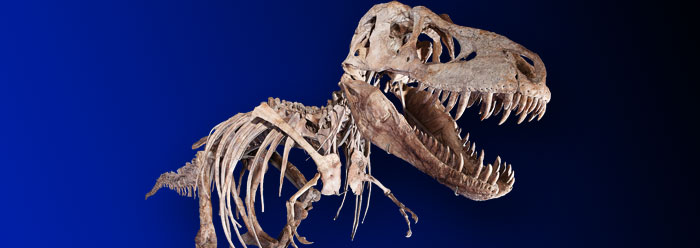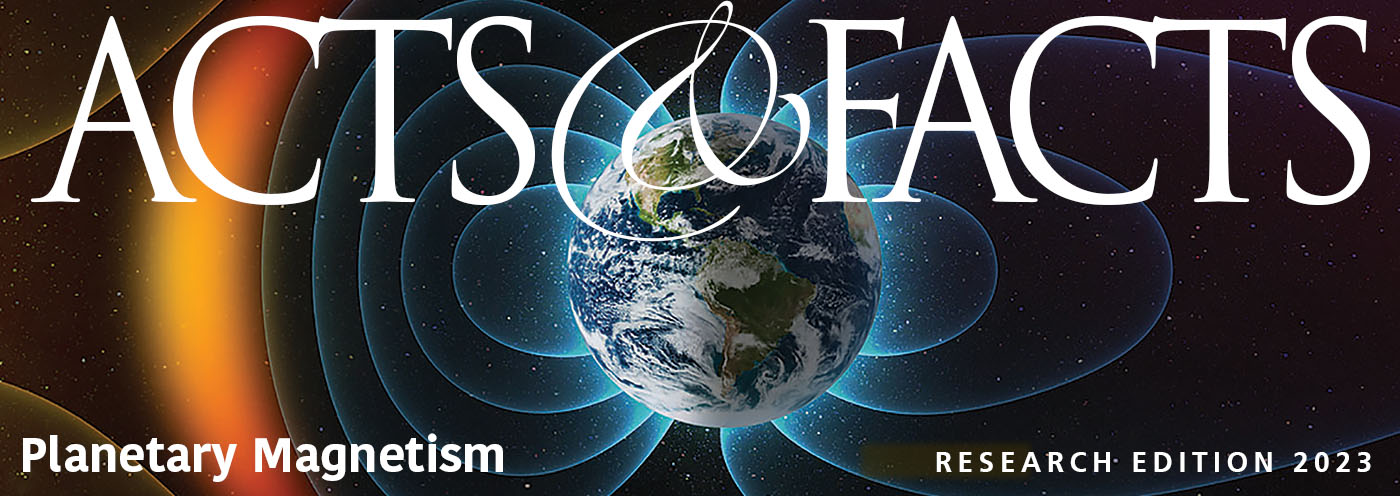Finding dinosaur DNA is as unthinkable to an evolutionist as finding a flat earth would be to a geographer. This is because DNA decays far too quickly to last millions of years. Thus, a recent report of possible dinosaur DNA promises to meet resistance from secular scientists. But combined with new DNA decay data, it builds a strong argument against evolutionary time.
Fossil experts have studied original dinosaur tissues and biochemicals for a long time. When tyrannosaur and hadrosaur bones from Montana were viewed under a microscope, they were found to harbor fresh-looking bone cells called osteocytes. Researchers even verified original—not mineralized—dinosaur proteins called collagen and elastin in 2009.1
The new report in the journal Bone identified vertebrate-specific proteins named actin and PHEX. It also described DNA in the dinosaur cells.2
Many secular scientists have sought to resolve the dilemma of fast-decaying biochemicals found deep within fossils by asserting that bacteria produced them after creeping into the bone sometime after the creatures were catastrophically buried. One way to help disprove the bacteria idea is to find exclusively animal proteins.
The researchers did just that. They also applied two different DNA-sensitive stains to the osteocytes. Both stains visualized DNA in a central location inside the long-dead dinosaur cells—where the cell’s nucleus should be.
They also applied an antibody that binds to a DNA-packaging protein called histone H4; bacteria do not have histone H4, but vertebrates do. The antibody bound its target, identifying yet another kind of original vertebrate protein. And the histone was sitting in the same nucleus-like central region within the cells. The stains and antibody did not bind other parts of the cell, nor the sediment that surrounded the dinosaur fossils. In short, this study strongly supported the presence of original dinosaur proteins and DNA.
The dinosaur cells certainly contain DNA, and it sits right where one would expect if it were original dinosaur DNA. Without sequencing the DNA, it is difficult to be absolutely sure. However, scientists have reported ancient DNA from various fossils, including dinosaur bone.3
If it is dinosaur DNA, then it cannot be millions of years old because of the results of a separate study. Scientists examined 158 ancient leg bones from the extinct giant moa bird that lived on New Zealand’s South Island. The study authors generated a DNA decay rate with unprecedented rigor.4
The moa research team measured the half-life of DNA to be 521 years under average local temperatures.5 After this time, only half of the amount of DNA present when the animal died should remain. And after another 521 years, only half of that remains, and so on until none is left. At this rate, DNA molecules in bone break down after only 10,000 years into tiny chemical segments too short for modern technology to sequence. And this result assumes preservation factors that optimize biochemical longevity.
DNA could not last half a million years, but paleontologists describe DNA in samples designated millions of years old. Ditching the millions-of-years dogma would resolve this dilemma. The clearly detected dinosaur proteins and what looks like dinosaur DNA make sense if the earth layers that contain them were deposited by Noah’s Flood only thousands of years ago.
References
- Schweitzer, M. H. et al. 2009. Biomolecular Characterization and Protein Sequences of the Campanian Hadrosaur B. Canadensis. Science. 324 (5927): 626-631.
- Schweitzer, M. H. et al. 2013 Molecular analyses of dinosaur osteocytes support the presence of endogenous molecules. Bone. 52 (1): 414-423.
- Woodward, S. R., N. J. Weyand, and M. Bunnell. 1994. DNA Sequence from Cretaceous Period Bone Fragments. Science. 266 (5188): 1229-1232.
- Allentoft, M. E. et al. 2012 The half-life of DNA in bone: measuring decay kinetics in 158 dated fossils. Proceedings of the Royal Society B. 279 (1748): 4224-4733.
- This is the half-life of a 242 bp region of moa mitochondrial DNA, calibrated using radiocarbon years to approximate calendar years.
* Mr. Thomas is Science Writer at the Institute for Creation Research.
Cite this article: Thomas, B. 2013. DNA in Dinosaur Bones? Acts & Facts. 42 (1): 15.

















